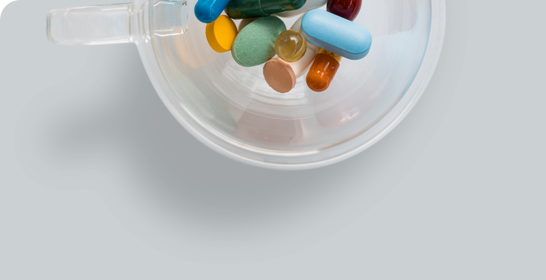We use cookies to make your experience better. To comply with the new e-Privacy directive, we need to ask for your consent to set the cookies. Learn more.
Lutelex L20 - Marigold [Tagetes erecta L.] flower 20% Lutein [HPLC] powder
Synonym(s):
- Trans-lutein; α-Carotene-3,3′-diol; β, ε-carotene-3,3′-diol, Lutein Xanthophyll
- CAS Number: 90131-43-4 (Tagetes erecta flower oleoresin); 127-40-2 (Lutein Xanthophyll)
- EC Number: 290-353-9 (Tagetes erecta flower oleoresin); 204-840-0 (Lutein Xanthophyll)
Lutelex L20 - Marigold [Tagetes erecta L.] flower 20% Lutein [HPLC] powder
Key Facts
Background
Lutein a xanthophyll carotenoid, found naturally in various fruits, vegetables and egg yolk. However, Lutelex is extracted from Marigold flowers where there is more than 20 times the amount of lutein. As well as this, Lutein has been found to have better absorption when paired with a lipid matrix, as it does in the flower petals of Marigold unlike the lutein found in fruits and vegetables (Hojnik et al., 2008).Lutein has been reported to reduce the risk of chronic diseases, such as heart disease, cancer and age-related eye diseases (Hojnik et al., 2008).
At Present we have the following variants of Lutelex
Lutelex L05 - Marigold [Tagetes erecta L.] flower 5% Lutein [HPLC] powderLutelex L10 - Marigold [Tagetes erecta L.] flower 10% Lutein [HPLC] powder
Lutelex L20 - Marigold [Tagetes erecta L.] flower 20% Lutein [HPLC] powder
Lutelex L50 - Marigold [Tagetes erecta L.] flower 50% Lutein [HPLC] Powder
Lutelex L70 - Marigold [Tagetes erecta L.] flower 70% Lutein [HPLC] Powder
Lutelex OS20 - Marigold [Tagetes erecta L.] flower 20% Lutein [HPLC] Oil
Lutelex LB10 - Marigold [Tagetes erecta L.] Marigold [Tagetes erecta L.] flower 10% Lutein [HPLC] granular powder [Beadlets]
Lutelex LB10Z1 - Marigold [Tagetes erecta L.] flower 10% Lutein 1% Zeaxanthin [HPLC] Beadlets
Chemistry
Lutein is composed of eight isoprene residues forming the carbon chain with 40 carbon atoms and two hydroxyl groups in β-ion rings. It is due to this structure that lutein helps the maintenance of retinal function and the prevention of numerous eye diseases (Li et al., 2020).Lutein
CAS - 127-40-2Molecular Formula - C40H56O2
Molecular Weight – 568.9 g/mol
IUPAC - (1R)-4-[(1E,3E,5E,7E,9E,11E,13E,15E,17E)-18-[(1R,4R)-4-hydroxy-2,6,6-trimethylcyclohex-2-en-1-yl]-3,7,12,16-tetramethyloctadeca-1,3,5,7,9,11,13,15,17-nonaenyl]-3,5,5-trimethylcyclohex-3-en-1-o
Zeaxanthin (Only in Lutelex LB10Z1)
CAS - 144-68-3Molecular Formula - C40H56O2
Molecular Weight – 568.9 g/mol
IUPAC - (1R)-4-[(1E,3E,5E,7E,9E,11E,13E,15E,17E)-18-[(4R)-4-hydroxy-2,6,6-trimethylcyclohexen-1-yl]-3,7,12,16-tetramethyloctadeca-1,3,5,7,9,11,13,15,17-nonaenyl]-3,5,5-trimethylcyclohex-3-en-1-ol
Health Benefits
Lutein, unlike many other carotenoids, is present in human tissue, specifically in the retina of the eye (Li et al., 2020). Lutein cannot be synthesised by the body and therefore must be obtained through the diet; however, many dietary sources of lutein do not possess good bioavailability and this is why Lutelex is a more favourable source of Lutein.Eye Health
Lutein contributes to eye health in a number of different ways.Antioxidant
Lutein contains two hydroxyl groups, which make it more polar and hydrophilic than other carotenoids which therefore allows it to react better with oxygen in serum and act as an antioxidant by scavenging reactive oxygen species (Krinsky et al., 2005).As well as this, lutein has an ability to filter blue light to a greater extent than any other carotenoids. (Junghans et al., 2001) In today’s age, we are constantly exposed to blue light through smartphones, computer screens, laptops, TVs and LED lighting (Renard & Leid, 2016). This blue light can have potentially toxic effects, potentially prompting free radical formation and induce oxidative stress in the eyes, ultimately leading to an increased risk of macular diseases and cataract (Krinsky & Yeum, 2003). Lutein has been shown to reduce this blue light induced damage by absorbing up to 90% of incident blue light, protecting the photoreceptors in the eye against photo-oxidative damages from blue light (Li et al., 2020).
Anti-inflammatory
Lutein has been found to inhibit pro-inflammatory molecules, as well reducing VEGF which can help prevent abnormal angiogenesis (the development of new blood vessels). As both inflammation and abnormal angiogenesis in retinal vasculature are major pathogenic mechanisms of numerous ocular diseases, lutein is effective at reducing the severity of these diseases (Li et al., 2020).Age-Related Macular Degeneration
The macula, located in the central retina, possess a high concentration of photoreceptors responsible for high-resolution visual acuity and sharp central vision. With age, the macula can be susceptible to gradual degenerative changes which results in a common aging eye disease known as age-related macular degeneration. This is one of the leading causes of blindness and irreversible visual impairment (Li et al., 2020). Studies have shown that higher levels of antioxidants in the blood, especially carotenoids such a lutein may be associated with a reduced risk of age-related macular degeneration (Delcourt et al., 2006).Diabetic Retinopathy
Diabetic retinopathy is one of the most common microvascular complications of diabetes, affecting around one third of patients with diabetes and is the leading cause of preventable blindness in adults (Li et al., 2020). Research has found that the supplementation of lutein can exert protective effects on visual function in diabetics (Moschos et al., 2017). Higher lutein plasma level appears to be associated with a lower risk of diabetic retinopathy development or progression (Li et al., 2020).Cataract
Cataract is one of the most common age-related eye diseases, contributing to nearly 90% of blindness in developed countries (Thompson & Lakhani, 2015), and is characterised by the opacification or clouding of lens, which reduces the amount of light passing through to reach the retina, resulting in a blurred vision. Tying back to lutein’s role as an antioxidant within the eye, and with cataracts being associated with oxidative stress, it is thought that lutein may be useful in cataract management.Other Benefits
Lutein has also demonstrated other benefits to eye health, with its ability to improve visual acuity and contrast sensitivity (Zhang et al., 2017), as well as its neuroprotective effect in reducing cell loss and cell apoptosis after retinal ischemia/reperfusion injury (Li et al., 2009).Skin
Like in the eyes, lutein is found in the skin and acts as an antioxidant and as a protector from light. Antioxidants within the skin provide the only immediate form of protection against sunlight exposure, however the antioxidant capacity of skin is greatly reduced during sunlight exposure due to it has also been shown that sunlight exposure can significantly reduce this antioxidant capacity. Lutein has shown to potentially protect the skin against damage caused by UV light. Lutein may also contribute to increasing hydration within the skin (Roberts et al., 2009).Lutein may play a role in reducing lipid peroxidation and increasing skin elasticity along with the aforementioned effect on skin hydration (Palombo et al., 2006).
Neuroprotection
Due to the high polyunsaturated fatty acid content and high metabolic activity of the brain, it is especially vulnerable to free radical attack (Erdman et al., 2015). Elevated fatty acid oxidation has been observed in the brains of individuals with Alzheimer’s disease and cognitive impairment. Therefore, thanks to lutein’s ability to ameliorate oxidative stress, it has been shown to exert neuroprotective effects (Aziz et al., 2019).However, lutein is thought to contribute to brain function through other mechanisms as well. Lutein has been suggested to modulate functional properties of photoreceptor, synaptic and other membranes along with changes in their physiochemical and structural features (Erdman et al., 2015).
While much of the underlying mechanisms associated with lutein intake and brain function remain unknown, there is clear evidence that lutein is found in every brain region and can only be acquired through the diet, and these lutein levels within the brain correlate with cognitive function in elderly individuals (Erdman et al., 2015).
Cardiovascular Health
Research has found correlations between lutein intake and cardiovascular health. Lutein intake has shown to lower the blood concentrations of inflammatory cytokines, while favouring the secretion of anti-inflammatory cytokines, reduce circulating complement factors which are all factors that positively impact cardiovascular health. (Buscemi et al., 2018). Factors that influence atherosclerosis and cardiovascular disease risk, such as lipid peroxidation and C-reactive protein serum concentrations, have been shown to be reduced following lutein supplementation. Studies have that suggested that lutein plasma levels were inversely associated with circulating levels of oxidized LDL, whereas low circulating levels of lutein were associated with an increased risk of developing atrial fibrillation (Karppi et al., 2010; Karppi et al., 2013).Cancer
Lutein intake has been observed to correlate to the risk of development of certain cancers, including colon, pancreatic and breast (Buscemi et al., 2018).References
- Aziz, E., Batool, R., Akhtar, W., Rehman, S., Shahzad, T., Malik, A., Shariati, M., Laishevtcev, A., Plygun, S., Heydari, M., Rauf, A. and Ahmed Arif, S., 2020. Xanthophyll: Health benefits and therapeutic insights. Life Sciences, 240, p.117104.
- Buscemi, S., Corleo, D., Di Pace, F., Petroni, M., Satriano, A. and Marchesini, G., 2018. The Effect of Lutein on Eye and Extra-Eye Health. Nutrients, 10(9), p.1321.
- Delcourt, C., Carrie`re, I., Delage, M., Barberger-Gateau, P. and Schalch, W., 2006. Plasma Lutein and Zeaxanthin and Other Carotenoids as Modifiable Risk Factors for Age-Related Maculopathy and Cataract: The POLA Study. Investigative Opthalmology & Visual Science, 47(6), p.2329.
- Erdman, J., Smith, J., Kuchan, M., Mohn, E., Johnson, E., Rubakhin, S., Wang, L., Sweedler, J. and Neuringer, M., 2015. Lutein and Brain Function. Foods, 4(4), pp.547-564.
- Hojnik, M., Škerget, M. and Knez, Ž., 2008. Extraction of lutein from Marigold flower petals – Experimental kinetics and modelling. LWT - Food Science and Technology, 41(10), pp.2008-2016.
- Junghans, A., Sies, H. and Stahl, W., 2001. Macular Pigments Lutein and Zeaxanthin as Blue Light Filters Studied in Liposomes. Archives of Biochemistry and Biophysics, 391(2), pp.160-164.
- Karppi, J., Kurl, S., Mäkikallio, T., Ronkainen, K. and Laukkanen, J., 2012. Low levels of plasma carotenoids are associated with an increased risk of atrial fibrillation. European Journal of Epidemiology, 28(1), pp.45-53.
- Karppi, J., Nurmi, T., Kurl, S., Rissanen, T. and Nyyssönen, K., 2010. Lycopene, lutein and β-carotene as determinants of LDL conjugated dienes in serum. Atherosclerosis, 209(2), pp.565-572.
- Krinsky, N. and Johnson, E., 2005. Carotenoid actions and their relation to health and disease. Molecular Aspects of Medicine, 26(6), pp.459-516.
- Krinsky, N. and Yeum, K., 2003. Carotenoid–radical interactions. Biochemical and Biophysical Research Communications, 305(3), pp.754-760.
- Li, L., Lee, J., Leung, H., Lam, W., Fu, Z. and Lo, A., 2020. Lutein Supplementation for Eye Diseases. Nutrients, 12(6), p.1721.
- Li, S., Fu, Z., Ma, H., Jang, W., So, K., Wong, D. and Lo, A., 2009. Effect of Lutein on Retinal Neurons and Oxidative Stress in a Model of Acute Retinal Ischemia/Reperfusion. Investigative Opthalmology & Visual Science, 50(2), p.836.
- Moschos, M., Dettoraki, M., Tsatsos, M., Kitsos, G. and Kalogeropoulos, C., 2017. Effect of carotenoids dietary supplementation on macular function in diabetic patients. Eye and Vision, 4(1).
- Palombo, P., Fabrizi, G., Ruocco, V., Ruocco, E., Fluhr, J., Roberts, R. and Morganti, P., 2007. Beneficial Long-Term Effects of Combined Oral/Topical Antioxidant Treatment with the Carotenoids Lutein and Zeaxanthin on Human Skin: A Double-Blind, Placebo-Controlled Study. Skin Pharmacology and Physiology, 20(4), pp.199-210.
- Renard, G. and Leid, J., 2016. The dangers of blue light: True story!. Journal Français d'Ophtalmologie, 39(5), pp.483-488.
- Roberts, R., Green, J. and Lewis, B., 2009. Lutein and zeaxanthin in eye and skin health. Clinics in Dermatology, 27(2), pp.195-201.
- Thompson, J. and Lakhani, N., 2015. Cataracts. Primary Care: Clinics in Office Practice, 42(3), pp.409-423.
- Zhang, P., Wu, C., Wang, Z., Wang, L., Han, Y., Sun, S., Li, Q. and Ma, L., 2017. Effect of lutein supplementation on visual function in nonproliferative diabetic retinopathy. Asia Pacific journal of clinical nutrition, 26(3), pp.406-411.
Write Your Own Review
Explore your sector
Vita Actives manufacture, source, stock and distribute the highest quality bulk ingredients for pharmaceutical, nutraceutical, cosmeceutical and veterinary finished product manufacturers. We also supply tailor-made raw materials and finished nutritional supplements.




